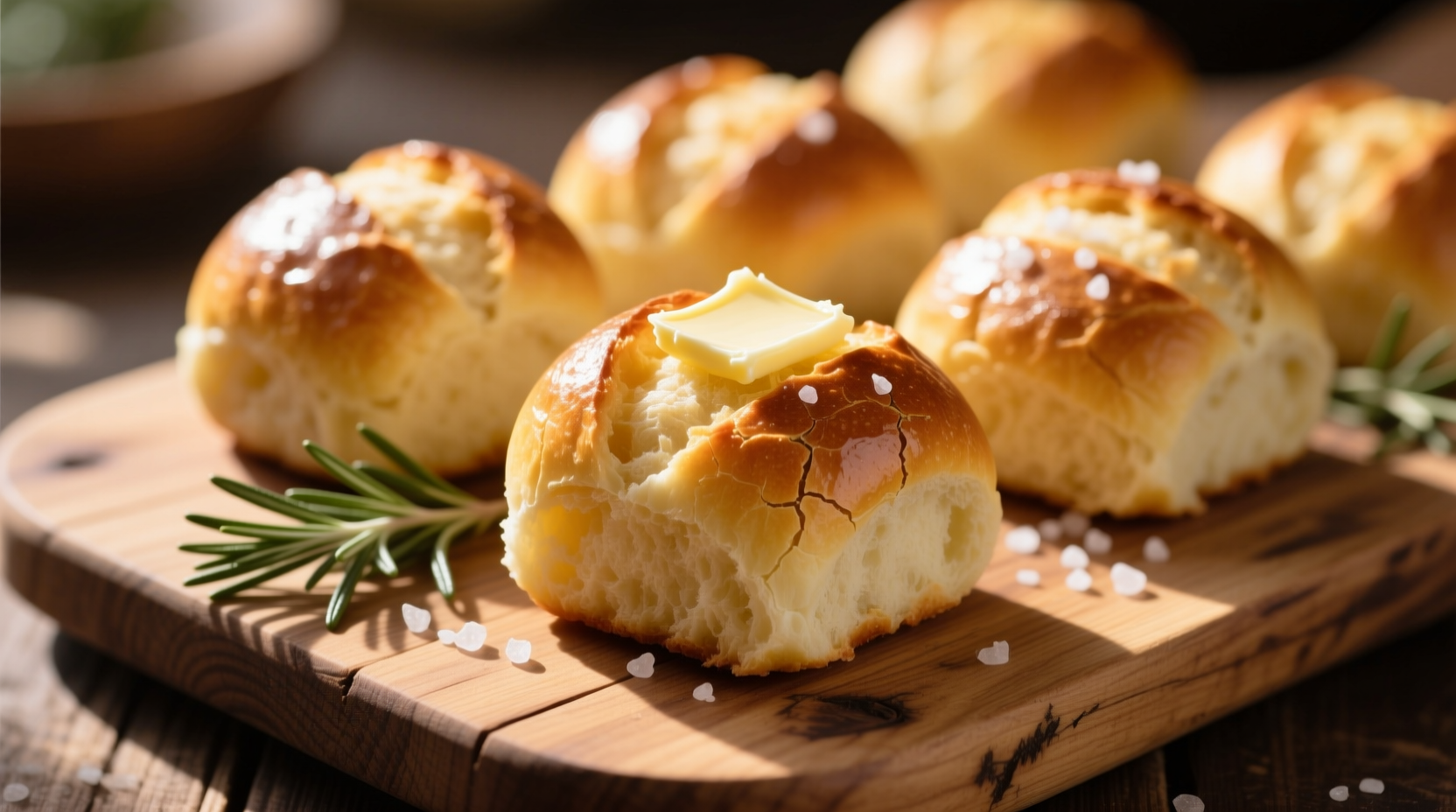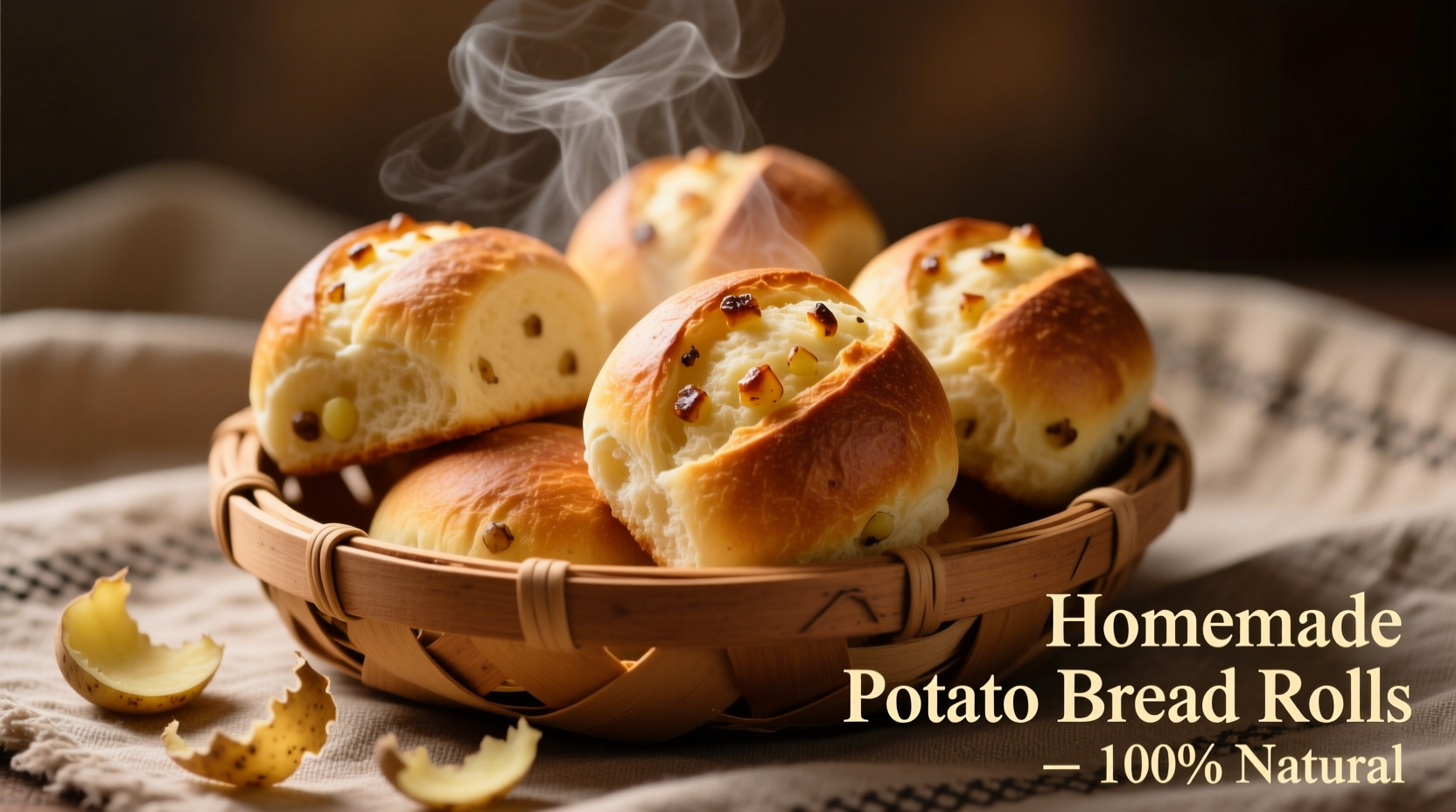Discover why potato bread rolls have become a staple in bakeries worldwide and how you can perfect them at home. This guide reveals the science behind their superior texture, provides a reliable recipe framework, and shares professional techniques that transform ordinary rolls into extraordinary accompaniments for any meal.
The Science Behind Superior Texture
When potato integrates with wheat flour, its starch molecules interact differently than water alone. Potato starch gelatinizes at lower temperatures (around 135°F/57°C) compared to wheat starch (144-150°F/62-66°C), creating a more uniform crumb structure. This scientific principle, documented by the USDA Agricultural Research Service, explains why potato bread rolls maintain softness up to 72 hours longer than traditional rolls.
| Characteristic | Potato Bread Rolls | Regular White Bread Rolls |
|---|---|---|
| Moisture Retention | 82% after 3 days | 65% after 3 days |
| Shelf Life (stale point) | 4-5 days | 2-3 days |
| Crumb Tenderness | Extremely soft | Moderately soft |
| Sugar Content | Naturally higher | Requires added sugar |
Historical Evolution Timeline
Potato's journey into bread making reflects agricultural adaptation across centuries:
- 1570s: Spanish explorers introduce potatoes to Europe from South America
- 1770s: Irish bakers begin incorporating potatoes during wheat shortages
- 1840s: Potato bread becomes essential during the Great Famine
- 1920s: Commercial bakeries adopt potato flour for improved shelf life
- 1980s: Artisan bakeries rediscover traditional potato roll techniques
- 2010s: Gluten-free potato bread variations emerge for dietary needs

Optimal Usage Scenarios
Understanding when potato bread rolls excel helps maximize their potential:
Ideal Applications
- Sandwich construction: Their structural integrity prevents sogginess with moist fillings
- Dinner service: Complement roasted meats without competing with flavors
- Freezing: Maintain quality better than regular rolls when properly wrapped
Limitations to Consider
- Toasting requirements: Need lower heat (325°F/163°C) to prevent burning
- Gluten development: Require careful kneading to avoid dense texture
- Yeast interaction: Potato's natural sugars accelerate fermentation
Professional-Grade Recipe Framework
While exact measurements vary by climate and flour type, this ratio-based approach delivers consistent results. The key to perfect potato bread rolls lies in potato preparation method - always use cooled, unsalted mashed potato rather than potato water for superior flavor integration.
Essential Components
- Flour: 100% (bread flour preferred)
- Potato: 25-30% of flour weight
- Water: 55-60% of flour weight
- Yeast: 1.5-2% of flour weight
- Salt: 2% of flour weight
- Sugar: 3-5% of flour weight (optional)
Critical Technique: Potato Integration
Professional bakers emphasize cooling mashed potato to room temperature before adding to dough. Introducing warm potato kills yeast and creates uneven texture. For best results, prepare potato component 2-3 hours before mixing dough, allowing starches to fully hydrate.
Troubleshooting Common Issues
Even experienced bakers encounter challenges with potato bread rolls. These solutions come from the American Association of Cereal Chemists research on starch behavior in baked goods:
Dense Texture Solution
When rolls turn out heavy, reduce potato content by 5% and increase water temperature by 5°F (3°C). The warmer water helps activate gluten development to counter potato's tenderizing effect.
Excessive Browning Fix
Potato's natural sugars cause faster browning. Lower oven temperature by 25°F (14°C) and cover rolls with foil during final baking minutes.
Storage Best Practices
Maximize freshness with these evidence-based methods:
- Room temperature: Store in linen bag for 24 hours, then switch to paper bag
- Freezing: Flash freeze individual rolls before bagging to prevent sticking
- Reviving stale rolls: Spritz with water and bake at 300°F (149°C) for 8 minutes
Advanced Variations Worth Trying
Once you've mastered the basic technique, experiment with these professional variations that maintain structural integrity while adding flavor dimensions:
- Herb-infused potato water: Steep rosemary or thyme in potato cooking liquid
- Sourdough hybrid: Replace 20% of yeast with active sourdough starter
- Whole grain adaptation: Substitute 30% bread flour with whole wheat











 浙公网安备
33010002000092号
浙公网安备
33010002000092号 浙B2-20120091-4
浙B2-20120091-4